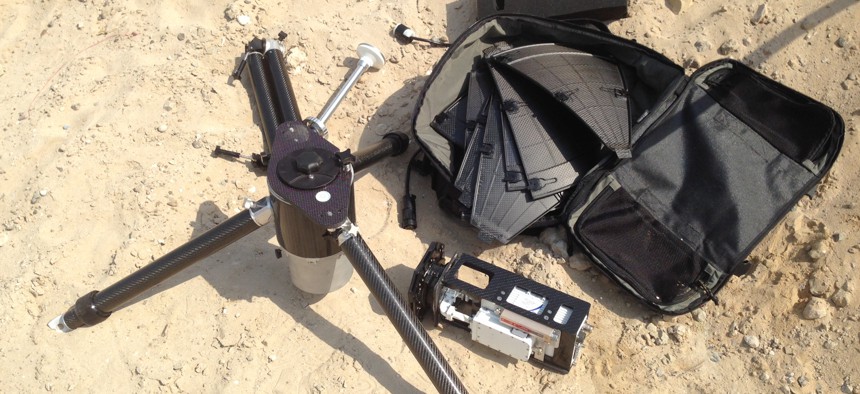Hughes offers new lightweight, mobile satcom terminal
Made of composite materials, the HM500 is engineered to enable dismounted units to have stronger beyond-line-of-sight connectivity.
Hughes unveiled a new lightweight, multi-frequency, mobile satcom terminal for dismounted units on-the-move in combat who are unable to maintain line-of-sight connectivity.
Built from composite materials, the HM500 weighs 31-pounds and is designed for rapid deployment, transportability and the use of condensed power sources, said Wayne Marhefka, senior director, business development, Hughes Defense Group.
“If you are trying to communicate thousands of miles to commanders and get intelligence information, this allows you to transmit voice, video and data 25,000 miles away,” he said.
Typical mobile satellite terminals can weigh up to 60 pounds and need to be vehicle mounted, but marines, special forces or dismounted Army units might be able to operate more effectively in combat with an HM500, Marhefka said.
The ruggedized small terminal uses pre-configured settings over multiple frequencies, including Ku, Ka, Mil Ka and X-band.
A software programmable modem allows for data rates from 5 megabits up to 10 or 20 megabits, Marhefka said. It is configured to operate on the JUPITER system, a system Hughes calls the first VSAT platform with System on a Chip (SoC) technology that incorporates the latest DVB-S2X air interface standard.
“Depending upon the software, the modem allows you the flexibility for multiple applications and long-term upgradeability as technology evolves,” he added.
By engineering HM500 with commercial and military technology, Hughes is hoping to impact the Air Force’s ongoing Analysis of Alternatives (AoA) aimed at improving satellite performance and security.
The service concept is to increase the number of aircraft, drones, routers and fixed ground stations to achieve a greater measure of resiliency by using commercial technology and high-throughput satellites.
Rick Lober, vice president of Hughes Defense Systems, said that the military may lease more satcom bandwidth from commercial suppliers such as Hughes, ViaSat or Intelsat, among others. Using more providers is another path to diversity and greater protection for satellite communications.
Many ground units in combat use mobile, ad-hoc terrestrial radio networks which operate through software programmable radio. This technology, such as the Army’s Rifleman Radio, provides useful line-of-sight transmissions of voice, video and data to maneuvering units without needing satellite connectivity.
However, should conditions include an austere environment, terrain obstacles or beyond-line-of-sight combat distances, then HM500 might prove useful, Marhefka said.
NEXT STORY: Air Force Budget Boosts Space Tech





